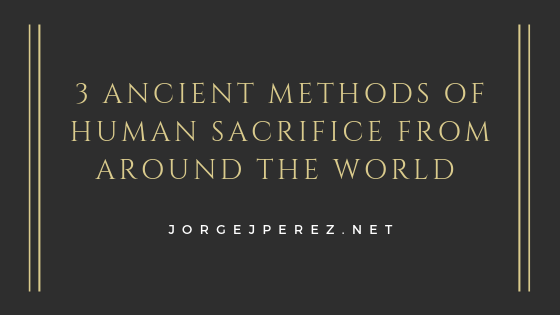The nature of worship varies across time and location, but one common feature of ancient religions was that of human sacrifice. The methods and motivations of such sacrifices differed across belief systems, as did the choices of sacrifices, but the fact remains that cultures across geographical boundaries practiced human sacrifice for the purpose of pleasing their deities, earning favor with higher powers, or attaining a blessing.
Human sacrifice is considered taboo in modern culture for the cruelty and audacity associated with the practice. Exploring the unique methods and intentions that accompanied the rituals of human sacrifice can shed light on the beliefs and priorities of ancients peoples, however, that would otherwise remain mysterious.
Celtic Wicker Man Sacrifice
Though most cases of human sacrifices occurred in the ancient world, there is still generally a sufficient amount of documentation to support the historical events. However, the Celts were known to lack adequate reports of their culture, beliefs, and practices. Julius Caesar wrote about the Celts and claimed that their methods of human sacrifice were especially cruel and performative; it should be noted that his records may be exaggerated or fabricated in an effort to dehumanize the Celtic people, and though this sacrificial event may not be wholly based in fact, the nature of the practice is still significant in terms of humanity’s potential for cruelty and murder.
The Wicker Man sacrifice reportedly entailed a massive humanoid sculpture, allegedly constructed out of wicker or some other flammable material. According to Caesar, human sacrifices were believed to have been assembled within the limbs and body of the structure before the entire arrangement was set ablaze. The ancient writer Strabo claimed that both animals and humans were sacrificed using this method.
Much of the controversy surrounding the wicker man method of human sacrifice pertains to the structural integrity of the wicker statue. Though wicker can be sturdy, once on fire, it would not hold its shape or keep the sacrifices within. Some historians believe that the sacrifices might have been drugged prior to being placed within the wicker man, had this method actually been used. Whether or not the wicker man was truly utilized by the Celtic druids for human sacrifice remains uncertain, but the idea of such a ritualistic, ornate, and elaborate method of sacrifice suggests deliberate effort and devotion to their deities.
Aztec Sun Worship
As a means of ensuring the sun’s consistent movement, it is believed that the Aztecs practiced human sacrifice to appease the god of the sun. If this is true, it is reasonable to estimate that hundreds, if not thousands, of human lives were sacrificed each year. The primary method of human sacrifice reportedly involved taking the individual to the top of a pyramid-like structure, binding them to a sacrificial table, ripping out their still-beating heart, and rolling the body down the stairs to a crowd who were then granted the ability to dispose of the body as they saw fit. There are some accounts that claim the Aztecs also partook in ritual cannibalism once the sacrifice had been completed.
This practice is certainly gory, but the Aztec society performed these rituals for the sake of survival. They allegedly believed that, if they did not provide human sacrifices to the gods, the sun might stop rising, famines and droughts would persist, and their lives would be doomed.
Japanese Hitobashira
Sacrificing human lives for an audience is one of the most common depictions of this ritualistic act, but not all methods of sacrifice were actively performative. In Japan, for instance, the act of hitobashira was a protective and preventive method of human sacrifice. Put simply, hitobashira entailed burying a living human in the walls or foundation of a structure.
The intention behind this gruesome practice was to protect the building from malicious spirits as well as natural disasters. The human sacrifice was believed to become a part of the structure as a sort of guardian or divine conduit; as such, their life would be used as payment to keep the structure intact and unharmed over time.
Unlike other methods of human sacrifice, hitobashira was highly regarded, and the lives that were sacrificed were honored after death. Often, small plaques were erected to memorialize the lives that were sacrificed in order to protect the building.
There are many legends about hitobashira that highlight the influence of the individual who was sacrificed. One example is about a woman named Oshizu who agreed to be sacrificed so that her son would be made a samurai. However, the castle’s lord did not follow through with this promise, and for many years, the castle’s moat overflowed when the spring rains came, resulting in the legend of the “Tears of Oshizu’s Sorrow.” Her spirit was believed to be placated when a cenotaph was placed within the grounds.
This method of human sacrifice differs from the previous methods discussed, mostly due to the value and power placed on the individual who was sacrificed. Those who sacrificed the lives of others for the purpose of protecting a building seemed to recognize the significance of the sacrifice and offered gratitude, respect, and honor in their memory.
Human sacrifice is believed to be a thing of the past, but it is something that should still be considered when looking to understand things like religion, civilization, and human nature itself.
_______
Jorge J. Perez is an attorney in South Florida. He is passionate about history, particularly that which predates the 20th century.

